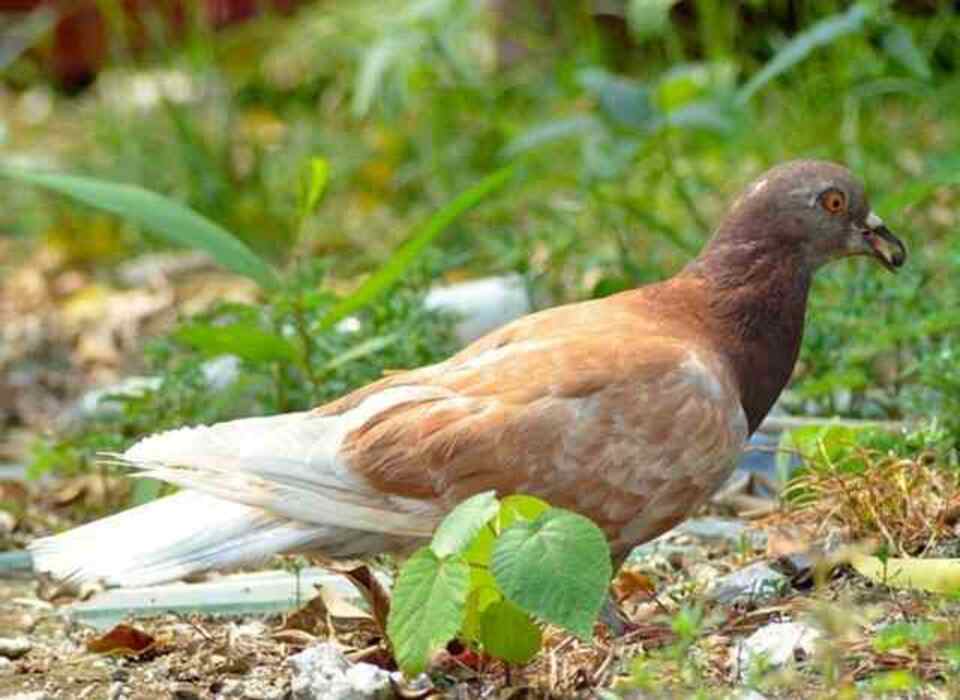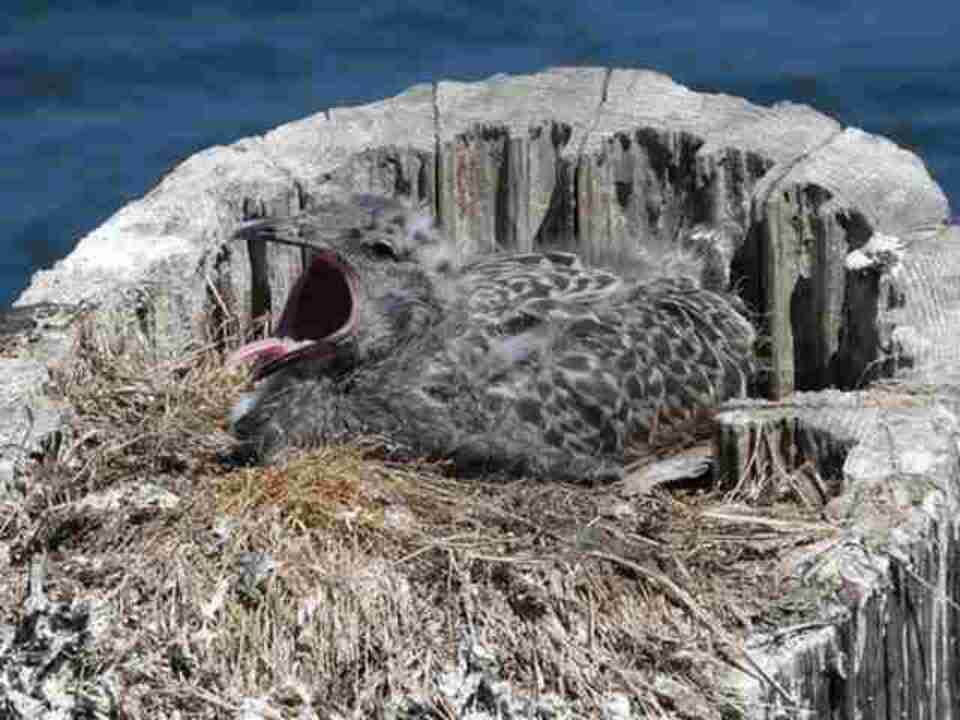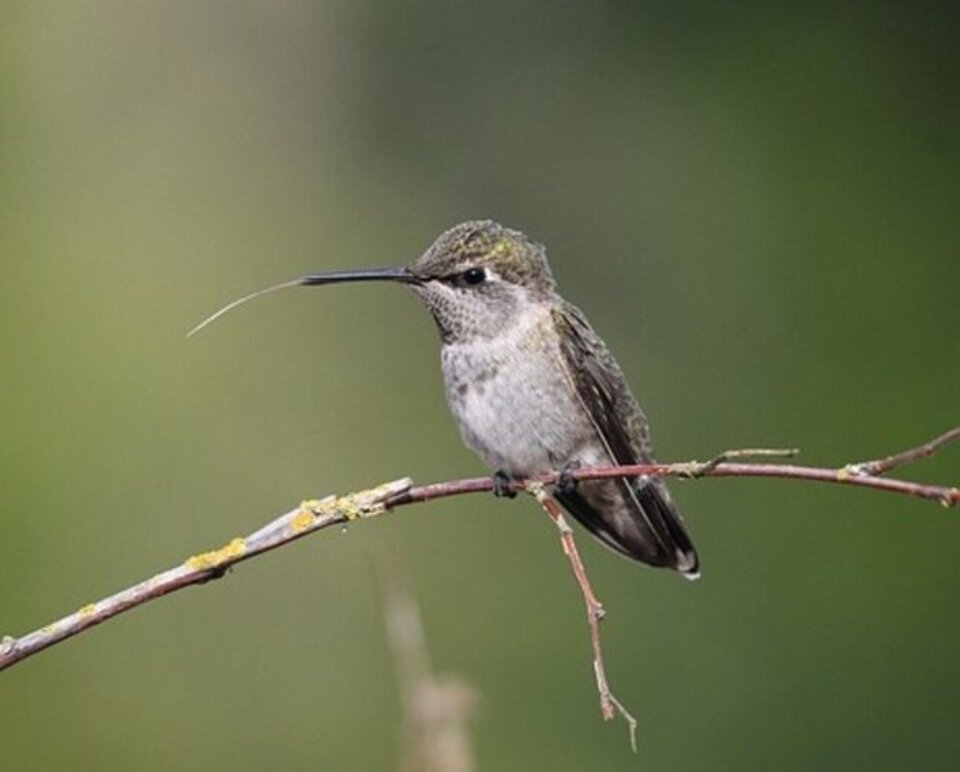You may be wondering, do all birds have tongues? The answer is yes, every bird has a tongue, but not all bird tongues are the same. Birds use their tongues for various purposes, from gathering food to making sounds, but the shape and size of the tongue can vary greatly depending on the species. In this article, we’ll explore how different birds use their tongues and what makes each one unique.
Click the Play button below to listen to our podcast:
Table of Contents
- 1 Do All Birds Have Tongues?
- 2 What Birds Don’t Have Tongues?
- 3 Do Birds Have Long Tongues?
- 4 Do Crows Have Tongues?
- 5 Do Pigeons Have Tongues?
- 6 Do Budgies Have Tongues?
- 7 Do Ducks Have Tongues?
- 8 Do Eagles Have Tongues?
- 9 Do Penguins Have Tongues?
- 10 Do Seagulls Have Tongues?
- 11 Are There Any Birds Without Tongues?
- 12 Do Hummingbirds Have Tongues?
- 13 Which Bird Has a Sticky Tongue?
- 14 Which Birds Have the Longest Tongues?
- 15 What Are the Different Types of Bird Tongues?
- 16 What Do Birds Use Their Tongues For?
- 17 Conclusion
- 18 Author
Do All Birds Have Tongues?
Yes, all birds have tongues, though they vary greatly in size, shape, and function. The bird’s tongue plays an integral role in its survival, helping with feeding, grooming, communication, and even vocalization. Even though bird tongues may not be as prominent as those of mammals or reptiles, they are still essential. For instance, woodpeckers have long and flexible tongues to reach insects hidden within tree bark, while hummingbirds use their slender tongues to extract nectar from deep within flowers. The versatility of a bird’s tongue is often closely tied to its feeding habits, and its design reflects the bird’s evolutionary needs.
Bird tongues differ from mammalian tongues, as they don’t have the same level of muscle complexity or ability to articulate sounds. Instead, bird tongues rely more on specialized structures like papillae, tiny projections that help birds grip and manipulate food. Moreover, bird tongues may vary in length, texture, and flexibility, which is essential for their specific dietary requirements.
Read more: The Bird Tongue: A Fascinating Aspect of Avian Anatomy!
What Birds Don’t Have Tongues?
It’s important to note that all birds have tongues, although they may not always be as visible or prominent as those of other animals. There is no species of bird without a tongue, but certain species may have tongues that are less adaptable or less visible than others. The misconception that some birds lack tongues may stem from the size and positioning of the tongue, which can sometimes be hidden or minimally used. For example, pigeons and ducks have less mobile tongues, which are more suited to drinking or preening than for vocalization.
In fact, the tongue is vital for various bird functions such as feeding, grooming, and even vocalizing in some species. Some birds, like the toucan, use their tongues to assist in calling or communicating, while others use them for manipulating food or keeping their feathers clean.
Do Birds Have Long Tongues?
The length of a bird’s tongue is closely tied to its feeding habits. Woodpeckers and hummingbirds are two notable examples of birds with exceptionally long tongues. Woodpeckers have tongues that can extend up to 4 inches (10 cm), while the hummingbird boasts a tongue that can extend even longer in some species. This extended tongue helps them access food that would otherwise be out of reach. For woodpeckers, the extended tongue allows them to extract insects from the depths of tree bark, while hummingbirds use their long tongues to collect nectar from deep within flowers.
Other birds, such as pelicans, have long tongues, although they serve a different purpose—helping them scoop up fish from the water. The size and length of a bird’s tongue directly correspond to its feeding behavior and dietary preferences.
| Bird Species | Tongue Length | Purpose |
|---|---|---|
| Woodpecker | Up to 4 inches | Insect extraction from trees |
| Hummingbird | Up to 6 inches | Nectar collection from flowers |
| Pelican | 3-4 inches | Fish scooping from water |
Do Crows Have Tongues?
Yes, crows have tongues, although they are quite small compared to other birds. While crows are known for their highly developed intelligence and their ability to manipulate objects with their beaks, their tongue is relatively rigid and less mobile. This reduced flexibility limits the variety of vocalizations they can make, though crows still produce a broad range of sounds such as caws, clicks, and even mimicry.
Interestingly, while the tongue isn’t as crucial for sound production as it is in mammals, crows rely heavily on their beaks for speech-like vocalizations. The shape and motion of their beaks are crucial for the variety of sounds they produce, which are often used in social interactions or for warning signals. The crows’ use of their tongues for feeding or preening is not as prominent as in other species but still plays a role in their survival.
Do Pigeons Have Tongues?
Pigeons have a specialized tongue that is used in both feeding and drinking. Their tongues are piston-like, which means they suck up water in a unique motion. This adaptation allows pigeons to drink quickly and efficiently, an essential skill for staying hydrated in urban environments. The pigeon’s tongue also has backward-facing spines, which help them grip and consume seeds and other small food items. These spines ensure that the food stays in place as the pigeon swallows.
Pigeons also rely on their tongue for preening, helping to clean their feathers and maintain proper grooming. The tongue helps them manage their feathers, removing debris and distributing natural oils to ensure the feathers remain waterproof. This critical task is essential for keeping pigeons healthy and well-maintained.
Do Budgies Have Tongues?
Budgies, also known as parakeets, do indeed have tongues, and they are vital for a variety of functions. The budgie’s tongue is long and narrow, covered with tiny hooks called papillae. These papillae help the budgie grip seed shells and grind up food to aid in digestion. The tongue also plays a significant role in helping budgies preen and maintain their feathers, ensuring that they stay clean and free from dirt or oil buildup.
Aside from preening, budgies also use their tongues in vocalization. Although the tongue doesn’t directly produce the sounds, it works in tandem with their beak and vocal cords to produce chirps and whistles. The flexibility of their tongue helps them create a variety of sounds, which is part of what makes budgies such active communicators in a flock setting.
Do Ducks Have Tongues?
Yes, ducks have tongues, and their tongues are quite unique in structure. A duck’s tongue is long and thin, which aids in both feeding and preening. Ducks use their tongues to manipulate food and bring it back to their mouths, especially when they are feeding on aquatic plants or small fish.
Additionally, the duck’s tongue serves a crucial function in grooming. By using their tongue, ducks can effectively clean their feathers and maintain the waterproofing oils they secrete. Without this natural grooming ability, ducks would not be able to float or swim as effectively. Their tongue, along with their beak, helps maintain the bird’s health and readiness for feeding.
Do Eagles Have Tongues?
Eagles, like other birds of prey, have short, thin tongues that play an essential role in feeding. While they primarily use their strong beaks to tear apart food, the tongue assists in swallowing by helping to guide food down their throat. The tongue is slightly curved and covered with papillae, which allow the eagle to grip food and swallow large pieces of meat or fish.
Eagles also use their tongues to help groom themselves, though their beaks are more commonly used for this task. The tongue’s role in food consumption is crucial, especially when eagles are feeding on larger prey, as it helps them maneuver food into a manageable size for swallowing.
Do Penguins Have Tongues?
Yes, penguins have tongues, and they are keratinized, meaning they are tough and well-suited for gripping prey. Penguins rely on their tongues to capture fish or other prey underwater and then swallow it whole. The bristles on their tongue help hold onto their food and push it down their throat.
In addition to feeding, penguins use their tongues to preen their feathers. By running their tongues over their plumage, penguins are able to keep their feathers clean and waterproof. Their ability to maintain their feathers is vital for insulation and swimming efficiency in the cold ocean waters where they live.
Do Seagulls Have Tongues?
Yes, seagulls have tongues, and their tongues are relatively triangular in shape, which aids in feeding. Seagulls primarily rely on their tongues for breaking down and swallowing food since they don’t chew their food in the traditional sense. Their tongues are essential for scooping up small fish, marine invertebrates, and other food sources.
The seagull’s tongue is also involved in drinking water, as they dip their tongues into water and suck it up. The shape and structure of the tongue make it particularly adept at these tasks. Additionally, seagulls use their tongues to help with preening, keeping their feathers clean and in good condition for flight.
Are There Any Birds Without Tongues?
No, there are no bird species that lack a tongue. While some bird tongues may be small, hidden, or less flexible, all birds rely on their tongues for essential tasks such as feeding, drinking, and grooming. Whether it’s a hummingbird’s long tongue or a woodpecker’s sticky tongue, each bird species has evolved a tongue suited for its specific dietary needs and behavior.
Bird tongues are vital to their overall health and survival, assisting in everything from feeding to social interactions and self-maintenance. Even though the structure and function may vary widely across species, the presence of a tongue remains a constant. Some birds, like parrots, have particularly versatile tongues that help them handle objects, while others like ducks and pigeons use theirs primarily for sucking up water or grooming.
Understanding the role of the tongue in different bird species helps us better appreciate the evolutionary adaptations that birds have undergone to thrive in their unique environments. Whether it’s food procurement, communication, or feather maintenance, bird tongues are essential to their well-being.
Do Hummingbirds Have Tongues?
Yes, hummingbirds have tongues, and they are among the most specialized of all bird tongues. A hummingbird’s tongue is long, forked, and highly flexible, capable of extending to nearly twice the length of its beak. This unique adaptation allows them to access nectar from flowers that other birds cannot reach. The tongue is also covered with tiny hair-like structures called papillae that help collect nectar as the hummingbird hovers in front of a flower.
Hummingbirds use their tongues in a rapid, rhythmic motion to lap up nectar. They have a very high metabolism, and the ability to consume nectar quickly is vital for their survival. In addition to nectar, hummingbirds may also eat small insects for protein. The tongue’s flexibility and ability to extend and retract rapidly are key to their feeding habits.
| Bird Species | Tongue Features | Purpose |
|---|---|---|
| Hummingbird | Forked, long, highly flexible | Extracting nectar from deep flowers |
| Woodpecker | Long, sticky, can extend up to 4 inches | Insect extraction from tree bark |
| Pigeon | Short, rigid, with backward-facing spines | Seed consumption, water suction |
Which Bird Has a Sticky Tongue?
One bird that stands out for its sticky tongue is the woodpecker. The woodpecker’s tongue is long and sticky, enabling it to reach into deep crevices of trees where insects hide. The sticky nature of the tongue helps the woodpecker catch and hold onto insects as they feed. The length of the tongue allows it to extend around the back of its head, which may seem like a strange feature, but it’s an evolutionary adaptation that greatly enhances the bird’s feeding efficiency.
Other birds, such as hummingbirds, have similarly specialized tongues, although they are not sticky in the same sense. These birds use their long, flexible tongues to collect nectar rather than to grab insects. Despite the differences, these adaptations show how diverse bird tongues can be in function.
Which Birds Have the Longest Tongues?
Some of the birds with the longest tongues relative to their size include the hummingbird, the woodpecker, and the sunbird. The hummingbird’s tongue can extend up to twice the length of its beak, which is particularly impressive considering their small size. The woodpecker’s tongue is long enough to reach behind its head, allowing it to extract insects deep within tree bark.
In contrast, the sunbird, a smaller species, has a tongue that is just as long as its body, allowing it to access nectar from deep flowers. Other birds with notably long tongues include species like the toucan, which uses its tongue to assist in food manipulation, though its tongue is not as long as those of hummingbirds or woodpeckers.
What Are the Different Types of Bird Tongues?
Bird tongues come in various shapes and structures, each uniquely adapted to their diet and feeding habits. These adaptations allow birds to consume nectar, seeds, insects, or meat efficiently. Below are the primary types of bird tongues and their functions:
1. Sticky Tongues
Sticky tongues are common in woodpeckers and other insectivorous birds. These tongues are coated with sticky saliva or fine bristles that help them catch and extract insects from deep crevices in tree bark.
2. Brush-Tipped Tongues
Birds that feed on nectar, such as hummingbirds and lorikeets, have brush-tipped tongues. These tongues are covered in hair-like structures called papillae, which help lap up nectar from flowers efficiently.
3. Muscular Tongues
Parrots and other seed-eating birds have thick, muscular tongues. These tongues help them manipulate food, crack seeds, and even assist in vocalization by controlling airflow while producing sounds.
4. Grooved Tongues
Some birds, like raptors and scavengers, have tongues with deep grooves. These grooves help them consume marrow from bones and assist in swallowing meat by channeling food toward the throat.
5. Piston-Like Tongues
Pigeons and doves have a unique piston-like tongue mechanism that allows them to drink water without tilting their heads. This adaptation enables them to suck up water efficiently, unlike most birds that rely on gravity to swallow.
6. Barbed Tongues
Certain species, such as woodpeckers and some birds of prey, have tongues with backward-facing barbs. These barbs help them grip and manipulate food, especially when tearing apart prey or extracting insects from hard-to-reach places.
7. Short and Rigid Tongues
Waterfowl like ducks have short, firm tongues suited for filtering food from water. These tongues work in coordination with the beak to trap edible material while expelling excess water.
8. Spiny Tongues
Geese and some other seed-eating birds have tongues covered in spiny projections. These spines help grip vegetation, seeds, and other food items, preventing them from slipping while eating.
Comparison of Different Bird Tongue Types
| Tongue Type | Example Birds | Function |
|---|---|---|
| Sticky | Woodpecker, Flicker | Capturing insects from crevices |
| Brush-Tipped | Hummingbird, Lorikeet | Extracting nectar from flowers |
| Muscular | Parrot, Cockatoo | Manipulating seeds and nuts; aiding in vocalization |
| Grooved | Eagle, Vulture | Consuming marrow from bones and aiding in swallowing |
| Piston-Like | Pigeon, Dove | Drawing water without head tilting |
| Barbed | Woodpecker, Hawk | Extracting insects or gripping food |
| Short and Rigid | Duck, Swan | Filtering food from water |
| Spiny | Goose, Finch | Grasping and handling food items |
These various tongue adaptations highlight the incredible ways birds have evolved to survive in different environments, optimizing their feeding techniques for maximum efficiency.
What Do Birds Use Their Tongues For?
Birds use their tongues for a variety of purposes that are crucial for their survival. Here are some of the most important functions of a bird’s tongue:
- Feeding: The primary use of a bird’s tongue is to help them manipulate food. Whether it’s grabbing seeds, scooping water, or extracting nectar, the tongue plays a vital role in food consumption.
- Grooming: Many birds, such as pigeons and ducks, use their tongues for preening their feathers. This helps keep their feathers clean, hydrated, and waterproof.
- Vocalization: While most birds rely on their vocal cords for sound production, the tongue plays a role in shaping and modulating the sounds they make.
- Mating Displays: Some birds use their tongues in mating rituals. For example, toucans may use their tongues during elaborate courtship displays to attract mates.
- Drinking: Ducks and pigeons, among others, use their tongues in a piston-like motion to help them suck up water.
Conclusion
To wrap it up, all birds have tongues, but the shape, size, and function of their tongues can vary dramatically from one species to another. These adaptations help birds survive and thrive in their specific environments. Whether it’s for feeding, grooming, or communicating, a bird’s tongue is just as important as any other part of its body. So, next time you spot a bird, take a moment to appreciate the unique role its tongue plays in its daily life.
Birds have evolved a vast array of tongue types, each suited to the bird’s individual needs. Whether long and sticky, short and rigid, or spiny and adaptable, the diversity of bird tongues showcases the evolutionary marvels that allow birds to inhabit every corner of the globe.
Related Post: Do Birds Have Taste Buds? Everything You Need To Know!





